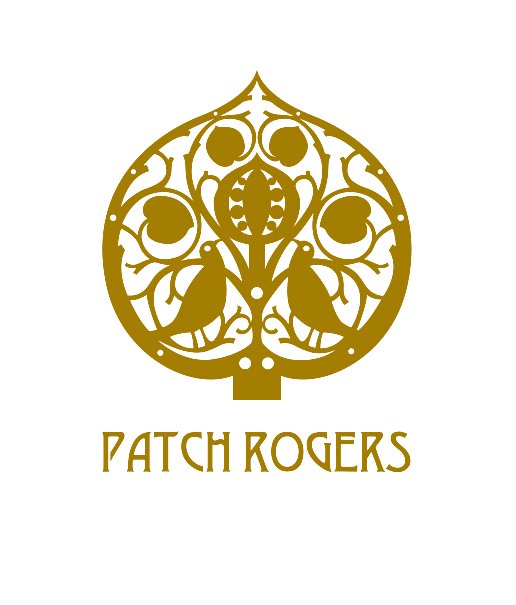TALWIN MORRIS BOOKCASE
TALWIN MORRIS BOOKCASE
Glasgow School large oak bookcase with carved detailing and leaded glass doors. By Talwin Morris c1900
Tallinn Morris (1865-19110 was articled to his uncle’s architectural film Morris & Smallwood, winning a prize in 1885 from the Berkshire Archaeological and Architectural Society. Following his apprenticeship, he obtained work in London between 1885 and 1890 with architect James Martin Brooks (1859-1903). Despite this training he seems not to have registered with the Royal Institute of British Architects.
From 1891 he took up post as sub art-editor under M. H. Spielmann for Black and White, a weekly magazine published by Cassell, designing many of its decorative initials and headpieces. By 1892 he had also designed the masthead of Cassell's Saturday Journal. Around this time he was sharing rooms in Belle Vue Road, Kingston upon Thames with his second cousin, the miller and collector Ernest Marsh (1843-1945). On 21 May 1892 he married another second cousin Alice Marsh (1861–1955), daughter of Joseph and Ellen Grace Marsh, who went on to enjoy her own highly successful career as an illustrator of children's books under the name Alice Talwin Morris.
Responding to an advertisement placed in The Standard on 21 February 1893 for an Art Director for publishers Blackie and Son, he moved to Glasgow in May 1893. In later years Agnes Blackie recalled "the appointment in 1892 of a disciple of art nouveau, Talwin Morris, as head of the art department, had tangible effect, not only on the design of book covers, but on the appearance of the office at 17 Stanhope Street" [the Blackie offices]. Morris soon made the acquaintance of the artists and designers associated with the Glasgow School of Art via Robert Blackie (1820-1896) who sat on the committee of the School from 1871-1892. Although he never attended the School, Morris soon became friends with Charles Rennie Mackintosh and his contemporaries, and his own work quickly began to incorporate Glasgow Style motifs.
Morris is also known to have been a keen collector of Martinware ceramics, a passion he shared with his cousin Ernest Marsh. Bookplates designed by Talwin and Alice at that time are generally thought to reflect the circumstances of their new home and life together.Their house was sold in July 1899 to the parents of his friends Margaret and Frances Macdonald, and the Morrisses moved to the newly-built Torwood in Bowling, West Dunbartonshire where Morris could enjoy a garden studio. Morris's Dunglass interiors were subsequently completely remodelled for the Macdonalds by Mackintosh.
In 1902 he introduced Charles Rennie Mackintosh to his employer Walter Blackie, which led to Mackintosh receiving the commission to design Blackie's home, Hill House, Helensburgh. In 1910, Morris designed the memorial of his employers the Blackie Family in Glasgow Necropolis, which was then carved by John Mossman.
From 5 October- 5 December 1896 Morris exhibited three book cover designs (The Universe, English Essays, and Daddy Samuel's Darling) at the fifth exhibition of the Arts and Crafts Exhibition Society at the New Gallery, London. In November–December 1900 he joined Mackintosh and others to exhibit a pressed bronze mirror at the eighth exhibition of the Vienna Secession, organised by the Vereinigung Bildender Künstler Österreichs and curated by Josef Hoffmann. Here his work was shown in room I as opposed to room X which housed the work of Mackintosh and other Glasgow artists. In 1902 his work was selected for exhibition alongside those of his contemporaries at the influential Prima Esposizione Internazionale d'Arte Decorativa Moderna held in Turin, at which he sold four beaten metal mirrors and a bookbinding. The 'Scottish Section' had been organised by
Francis Henry Newbery, Headmaster of Glasgow School of Art and consisted mostly of Glasgow artists across a suite of three rooms designed by Charles Rennie Mackintosh.
Morris became hugely influential in Victorian book design by moving away from the popular narrative bindings of the time to a more modern Art Nouveau approach where line, curve and decoration are used to entice the reader. The book designs of Dante Gabriel Rossetti have been cited as a particular influence. At Blackie and Son his output was prolific, producing many designs that could be printed in different colourways across series such as the Red Letter Library and Library of Famous Books. He also designed books for Morison Brothers of Glasgow, Cassell, J. G. Cotta of Stuttgart, J. C. C. Bruns of Minden, F. Volckmar, Mudie's Select Library, and from 1898 the Blackie subsidiary Gresham. In 1906 he also supplied the cover design of the influential German magazine Dekorative Kunst. Though many of his book designs are unsigned, some feature his 'signature' of a single dot followed, after a pause, by a further two dots (a stylised rendition of his initials in morse code which would consist of a long dash followed by two shorted dashes). Others feature a stylised elongated TM monogram. During his tenure, Morris also commissioned book designs by designers such as Ethel Larcombe and Silver Studio.




